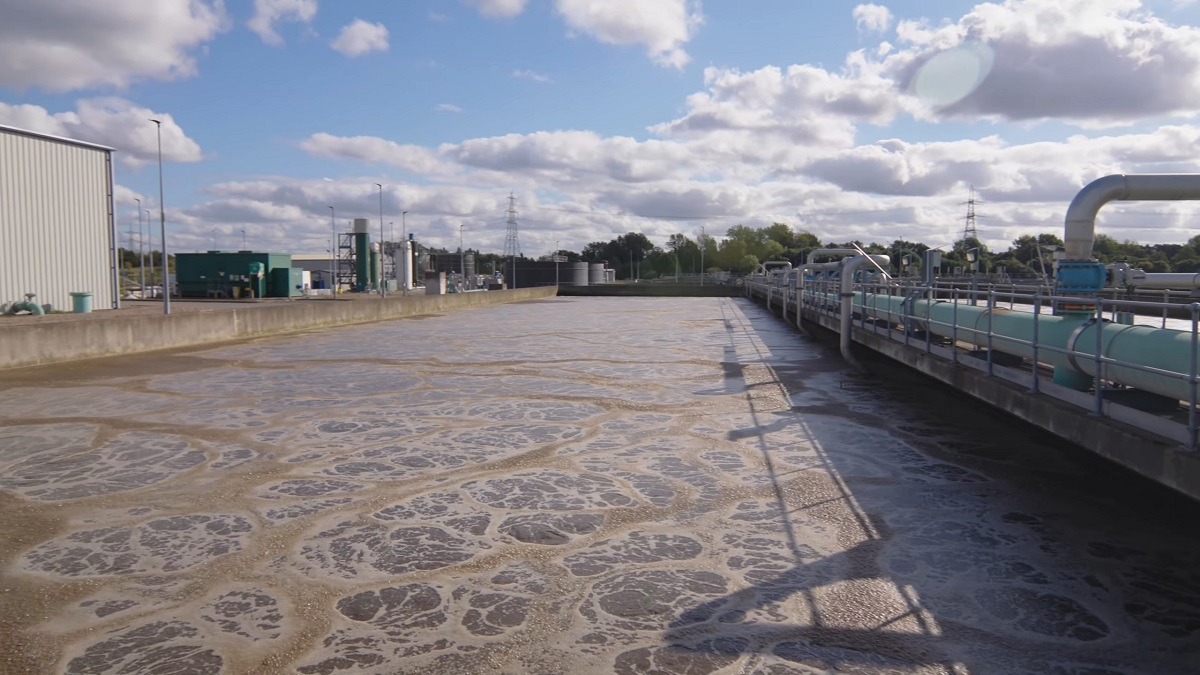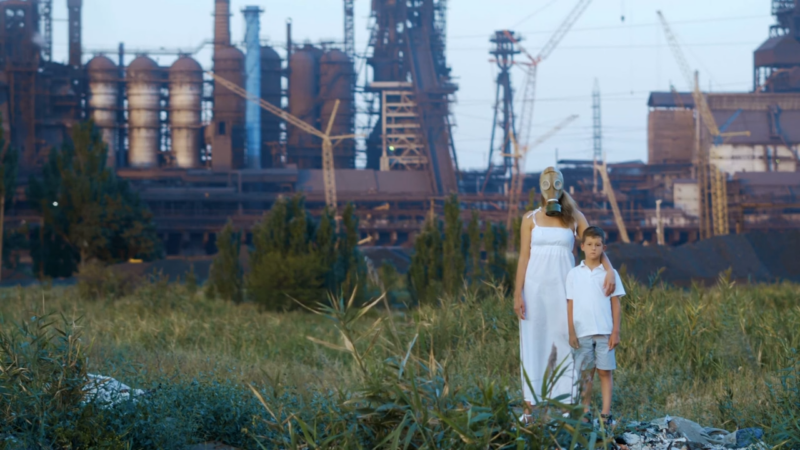Thermal pollution changes water in rivers, lakes, and oceans. Factories and power plants release heated water, disrupting aquatic life and harming delicate ecosystems.
Over time, this creates problems like lower oxygen levels and increased stress on animals and plants. Learning about these effects helps protect nature and support a healthier environment.
Key Facts
- Thermal pollution raises water temperatures, harming aquatic life.
- It causes biodiversity loss and creates harmful algal blooms.
- Reducing thermal pollution requires better cooling systems and environmental planning.
How Thermal Pollution Impacts Aquatic Life?

Thermal pollution harms aquatic life by raising water temperatures beyond what many species can tolerate. Fish, amphibians, and other aquatic organisms depend on stable temperatures for survival.
When warm water enters rivers, lakes, or oceans, it can cause immediate and long-term damage. Many species cannot adapt quickly, leading to population declines and disruptions in the ecosystem.
Sudden Temperature Changes and Thermal Shock
Thermal shock happens when water temperatures change rapidly. Fish and other aquatic animals struggle to adjust, leading to stress or death. For example, power plants that release hot water can create extreme temperature spikes, causing some species to die almost instantly.
Why Warm Water Reduces Oxygen Levels
Warmer water holds less oxygen than cooler water. Fish and other organisms need oxygen to survive, but higher temperatures reduce its availability. As oxygen levels drop, aquatic animals must work harder to breathe, causing stress and making survival harder.
The Struggle for Survival in Sensitive Species
Some species are more sensitive to temperature changes than others. Fish with specific temperature needs for breeding or feeding are especially at risk. When their habitat becomes too warm, they may fail to reproduce, find food, or escape predators, leading to population declines.
The Biodiversity Crisis Caused by Thermal Pollution

Thermal pollution affects biodiversity by making water bodies unsuitable for many species. Some animals and plants cannot survive in warmer waters, leading to a loss of life and balance in ecosystems.
As species disappear, the entire food chain is disrupted, impacting everything from tiny organisms to large predators.
How Species Loss Affects Ecosystems
When a species disappears, it creates a chain reaction throughout the ecosystem. Predators lose their prey, and plants may lose the animals that help them grow. Each species plays a role, and losing even one can destabilize the entire environment.
Migration Challenges and Extinction Risks
Some species try to migrate to cooler areas when water gets too warm. However, many cannot move quickly or far enough to escape. Others are trapped in habitats that no longer support their survival, leading to local extinctions and permanent loss of biodiversity.
Disrupted Life Cycles of Aquatic Species

Thermal pollution interferes with the natural life cycles of many aquatic species. Water temperature plays a crucial role in guiding activities like breeding, feeding, and migration. When temperatures rise, these processes can break down, putting entire populations at risk.
Reproductive Timing and Survival Problems
Many fish and aquatic animals rely on specific temperature cues to reproduce. Warmer water can trigger breeding at the wrong time, leaving offspring unable to survive in unsuitable conditions.
This reduces their chances of reaching adulthood and harms the species as a whole.
Long-Term Declines in Fish Populations
Disrupted reproduction, combined with other stressors like reduced oxygen levels, leads to fewer fish over time. Populations of species important for food, biodiversity, and ecosystems may shrink, creating long-lasting damage to aquatic environments.
Algal Blooms and Their Deadly Consequences

Thermal pollution encourages the growth of algae, which can quickly take over water bodies. While algae are a natural part of ecosystems, excessive growth can harm aquatic life.
When these algae die and decompose, they consume large amounts of oxygen, leading to hypoxic conditions, or “dead zones,” where most aquatic life cannot survive.
Warmer water provides the perfect environment for algae to grow faster. High temperatures combined with nutrients from pollution, such as agricultural runoff, create a dangerous cycle where algae spread uncontrollably.
How Dead Zones Destroy Aquatic Habitats
When algae die and decompose, they consume large amounts of oxygen. This creates areas with little to no oxygen, known as dead zones. These zones cannot support most aquatic life, leaving entire regions lifeless and uninhabitable for fish and other species.
Thermal Pollution and Water Quality Risks
Thermal pollution can significantly affect water quality. Warmer temperatures can increase the solubility and toxicity of many pollutants, including heavy metals and chemicals.
Polluted water affects ecosystems, drinking supplies, and recreational areas.
Toxic Pollutants in Warmer Water
- Warmer water increases the solubility of chemicals like heavy metals and industrial waste, making them more toxic.
- Pollutants accumulate in fish and other organisms, causing long-term health problems that travel up the food chain.
- This contamination often makes water unsafe for drinking and farming, impacting nearby communities.
Bacteria Growth and Public Health Threats
Higher temperatures promote the growth of harmful bacteria and pathogens:
- Diseases from bacteria in contaminated water can spread to humans and animals.
- Algal blooms caused by warm water can release toxins that make water unsafe to drink or use.
- Recreational areas near polluted water often experience closures, affecting tourism and public health.
Climate Change Feedback Loop
Thermal pollution can contribute to a feedback loop that exacerbates climate change. Warmer water bodies release more CO2 and methane, potent greenhouse gases, into the atmosphere.
Warmer Waters and Greenhouse Gas Emissions
- Heated water releases more carbon dioxide (CO2) and methane, which are potent greenhouse gases.
- Power plants and industrial facilities that discharge warm water amplify this effect, adding to global warming.
- These emissions create a feedback loop where rising temperatures lead to even more gas releases.
How Ecosystems Lose Their Carbon Storage Ability
- Aquatic plants and algae play a key role in absorbing CO2. Warmer water reduces their ability to perform this function.
- Wetlands, which act as natural carbon sinks, become less effective due to higher temperatures and disrupted nutrient cycles.
- Loss of carbon storage in water systems intensifies climate change, affecting global temperatures and weather patterns.
Human Health Risks
Contaminated water, harmful bacteria, and toxins from algal blooms threaten communities that depend on water for drinking, farming, and recreation.
Toxins and Diseases from Algal Blooms
- Harmful algal blooms release toxins that can contaminate drinking water.
- Exposure to these toxins can cause severe health problems, including skin irritation, respiratory issues, and neurological effects.
- Consuming fish or shellfish from affected areas can lead to poisoning and long-term health risks.
Risks to Communities Depending on Polluted Water
- Villages and cities relying on rivers or lakes face increased risk of waterborne diseases due to bacteria thriving in warmer water.
- Contaminated irrigation water can harm crops, reducing food safety and quality.
- Recreational water activities become unsafe, impacting public health and well-being.
Practical Solutions to Manage Thermal Pollution
Thermal pollution can be reduced through simple changes in how industries and communities handle water.
Fixing Factory Water Waste

- Factories can cool hot water before releasing it into rivers by using special cooling systems.
- Building cooling ponds lets water cool off naturally before it flows back into the environment.
- Replacing outdated machines with modern ones helps stop extra heat from entering water systems.
Adding Shade to Waterways
- Planting trees near rivers and lakes keeps water cool by blocking direct sunlight.
- Shade from plants helps fish and other animals survive better in warmer weather.
- Trees also stop dirt and pollution from washing into water, keeping it cleaner.
Making Cities Smarter
- Cities can add more parks, trees, and gardens to cool down areas that get too hot.
- Roads and sidewalks can use materials that don’t absorb as much heat, making runoff water cooler.
- Better drainage systems help stop warm rainwater from overwhelming rivers and lakes.
Getting People Involved
- People can learn how simple actions, like saving water or keeping waste out of rivers, help the environment.
- Local clean-up events and tree-planting projects give everyone a chance to help fix the problem.
- Sharing knowledge about the damage caused by warm water inspires change on a bigger scale.
Case Studies and Real-World Examples

Thermal pollution, the alteration of natural water temperatures due to human activities, poses significant environmental challenges worldwide. Here are some notable case studies:
1. The Dark Side of Thermal Power Plants in India
In India, thermal power plants have been linked to environmental violations, including thermal pollution. These facilities often discharge heated water into nearby water bodies, disrupting local ecosystems.
A report by the Centre for Financial Accountability highlights such issues, emphasizing the need for stricter regulations and a shift towards greener energy sources.
2. Thermal Pollution from Large Dams
Large dams can alter the natural temperature regimes of downstream river ecosystems, leading to thermal pollution. A study published in the Water Quality Research Journal proposes a simulation-optimization framework to mitigate such impacts, tested on a real-world case study.
3. Urban Heat Islands and Thermal Pollution
Urbanization contributes to thermal pollution through the urban heat island effect, where cities experience higher temperatures than surrounding rural areas. This phenomenon can increase water temperatures in urban water bodies, affecting aquatic life.
The Environmental Literacy Council discusses how wetlands interact with temperature changes in urban settings.
FAQs
What Is the Difference Between Thermal Pollution and Global Warming?
Thermal pollution is the direct heating of water sources due to human activities, like industrial discharges, which can cause localized temperature increases.
Global warming, on the other hand, is a large-scale climate change phenomenon driven by greenhouse gas emissions, resulting in a rise in overall global temperatures.
How Does Thermal Pollution Affect Energy Production Costs?
When thermal pollution becomes severe, it can force industries and power plants to install expensive cooling systems or modify their operations to comply with environmental regulations.
These adjustments can lead to higher operational costs, which may be passed on to consumers.
Can Natural Events Cause Thermal Pollution?
Yes, natural events like volcanic activity, underwater geothermal vents, or even prolonged heatwaves can cause localized water temperature increases.
Although these occurrences differ from human-caused thermal pollution, they can still disrupt ecosystems in similar ways.
What Role Does Thermal Pollution Play in Altering Fish Migration Patterns?
Warmer water temperatures in rivers and coastal areas can confuse or block fish migration routes. Fish that rely on specific temperature cues to begin their migration might end up at the wrong location or time, impacting their ability to find food, reproduce, or reach their natural habitats.
How Can Communities Track and Monitor Thermal Pollution?
Communities can use tools such as temperature sensors placed in local waterways, citizen science programs that encourage residents to report unusual temperature shifts, and partnerships with universities or environmental agencies.
Tracking these changes helps inform policies and guides efforts to protect local ecosystems.
Conclusion
Thermal pollution presents a range of challenges for aquatic ecosystems, water quality, human health, and even climate stability. By understanding the causes and effects, communities and industries can adopt effective strategies to reduce the harm.

